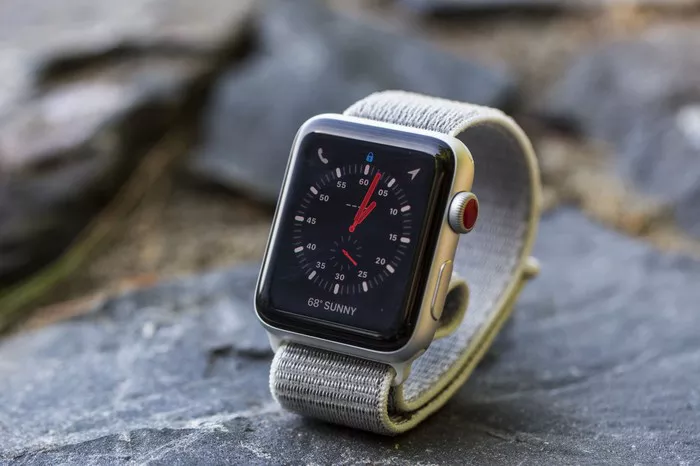The Apple Watch is a powerful and multifunctional device, designed to assist users in various activities, from fitness tracking to notifications. One common concern among users is battery life. Specifically, how long can you expect your Apple Watch to last when the battery reaches 10 percent? This article will explore this topic in depth, providing insights into battery usage, power-saving tips, and comparisons with other smartwatches.
Understanding Apple Watch Battery Life
Battery Specifications
The Apple Watch comes with a lithium-ion battery that varies in capacity based on the model. Generally, the battery life is estimated in terms of usage patterns, which can significantly affect how long it lasts.
Series 6 and Later: These models typically have a battery capacity ranging from 303 mAh to 350 mAh.
Older Models: Previous models, like the Series 3, have a lower capacity of around 279 mAh.
Normal Battery Life
Apple claims that the Apple Watch can last up to 18 hours on a single charge under normal usage conditions. This includes:
- 90 notifications
- 90 minutes of app use
- 45 minutes of workout tracking with GPS
Factors Affecting Battery Life
Several factors can impact how long your Apple Watch will last on 10 percent battery. Understanding these factors can help you make informed decisions about your device’s usage.
Screen Brightness: Higher brightness consumes more power.
Active Features: Using features like GPS, heart rate monitoring, and Always-On Display (AOD) drains the battery faster.
Apps Running: Background apps can also contribute to battery drain.
Connectivity: Wi-Fi, Bluetooth, and cellular connections use more power.
How Long Will 10 Percent Battery Last?
General Estimate
On average, when your Apple Watch shows 10 percent battery, you can expect it to last anywhere from 30 minutes to 1 hour, depending on your usage. Here’s a breakdown:
Light Usage: If you are primarily receiving notifications and checking the time, you might get closer to 1 hour.
Moderate Usage: If you are using apps or tracking workouts, the battery may last around 30-45 minutes.
Heavy Usage: Features like GPS and heart rate monitoring will drain the battery faster, potentially leading to a shutdown within 30 minutes.
Example Scenarios
Light Usage Scenario: You receive notifications and check the time occasionally. The battery might last up to 60 minutes.
Workout Tracking: Using GPS for a run can drain the battery more quickly, leaving you with about 30-40 minutes.
Always-On Display: If the AOD feature is activated, expect your watch to last less time, around 20-30 minutes.
See Also: What Is The Best Apple Watch For The Money
Power-Saving Tips for Your Apple Watch
When your battery is low, implementing power-saving techniques can help extend its life. Here are some practical tips:
Adjust Screen Brightness
Lowering the screen brightness can significantly save battery life. You can adjust it through the Control Center or the Watch app on your iPhone.
Turn Off Always-On Display
If your watch has the Always-On Display feature, disabling it can help preserve battery power. This can be done in the settings menu.
Disable Background App Refresh
Background app refresh allows apps to update their content in the background. Turning this off can save battery life.
- Open the Watch app on your iPhone.
- Navigate to General > Background App Refresh.
- Toggle off the apps you don’t need updating in the background.
Use Airplane Mode
When you know you won’t be using your Apple Watch for a while, turning on Airplane Mode can help conserve battery. This will disable all wireless communication.
Limit Notifications
Reducing the number of notifications can help save battery life. You can customize your notification settings in the Watch app.
Turn Off Unused Features
Disabling features you do not frequently use, such as heart rate monitoring or fitness tracking, can help extend your watch’s battery life.
Comparing with Other Smartwatches
Battery Life Comparison
While the Apple Watch has its strengths, it’s essential to see how it compares to other smartwatches in terms of battery life.
Samsung Galaxy Watch Series: Typically offers longer battery life, lasting up to two days on a single charge, depending on usage.
Fitbit Smartwatches: Many Fitbit models boast battery life ranging from 4 to 7 days, depending on features used.
Garmin Smartwatches: Known for excellent battery longevity, some models can last up to two weeks in smartwatch mode.
Charging Times
Apple Watch typically charges to 80% in about 1.5 hours and reaches 100% in about 2.5 hours. In comparison, other brands may offer faster charging or longer-lasting batteries.
Conclusion
The Apple Watch is a powerful device with various features, but its battery life is a common concern among users. When your Apple Watch shows 10 percent battery, it can generally last from 30 minutes to 1 hour, depending on usage. By implementing power-saving tips and understanding how your usage patterns affect battery life, you can extend the time your watch lasts on a low battery.
In the ever-evolving world of smartwatches, knowing how to manage your device’s battery effectively can enhance your experience and keep you connected for longer. Whether you are a fitness enthusiast or someone who enjoys staying updated on notifications, understanding your Apple Watch’s battery life and making informed choices can ensure you get the most out of your device.

